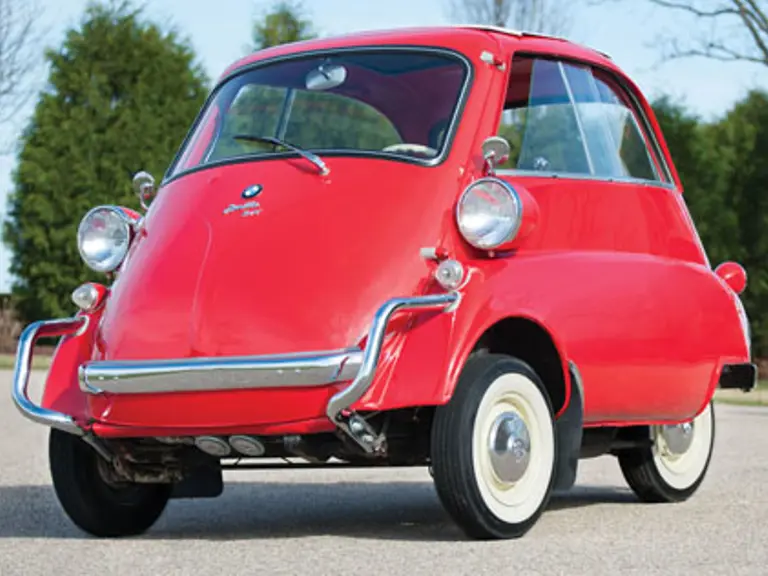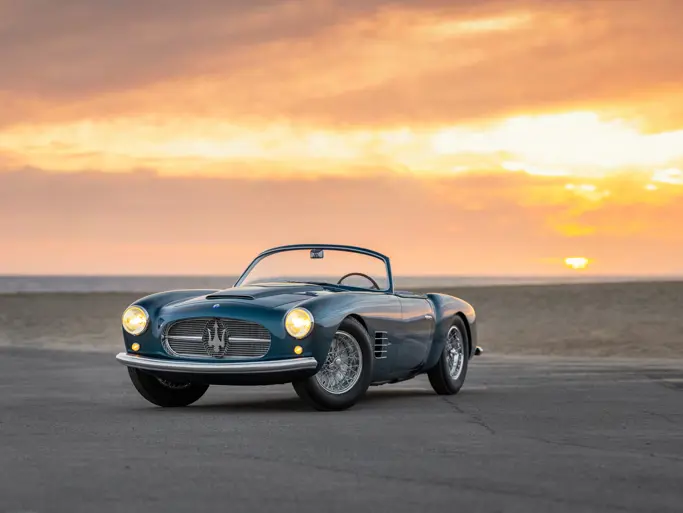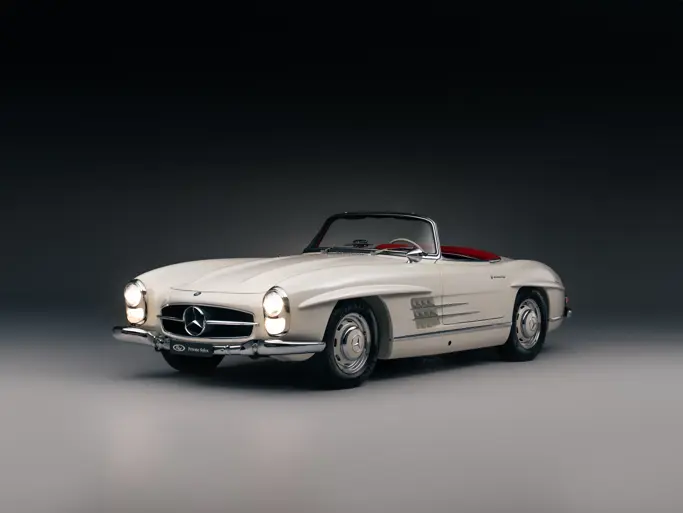The BMW Isetta is widely recognized as the world’s most popular microcar. While small in size, they have garnered a dedicated international following and this fine example is presented in excellent condition after being professionally frame-off restored in 2012.
Though largely eclipsed by their bigger brethren, BMW minicars have attracted their fair share of attention on their own – both when new, and then later when enthusiasts embraced them as a specialty collectable. Not everyone is readily aware that the Isetta came from the BMW works and in turn, was of German build and quality. The car was not first built by the German automaker; its origins go back to the Iso Works in Italy.
Renzo Rivolta was an early adopter of the inventive bubble car style in 1953. The Iso refrigerator magnate created an odd four-wheeled, two-seat Isetta that was powered by a 236-cc, two-stroke twin-cylinder engine. The car was cute and quirky, with a steering wheel that hinged outwards with the front-opening door (similar to a refrigerator, naturally).
In 1954, Rivolta sold the whole works – tooling and all –to BMW, who was looking for an economical car with mass appeal to combat the company’s bleak financial picture. Out went the two-stroke twin and in went a 250-cc motorcycle engine. In 1956, the first full year of production, BMW sold 22,000 Isettas. Encouraged by the results, the engine was bumped up to a 298-cc four-stroke single, which turned the car into reliable transportation that was capable of 50-mpg at 50-mph. Some have reported up to 70-mpg by being quite prudent in achieving that number. By 1962, BMW had built 161,728 Isettas, with 41,000 more constructed under license in other countries.
This particular example is handsomely finished in red with a gray interior and has a tidy overall presentation. The front-entry provides unique access to the 750-pound platform. It is powered by a 298-cc, 13-hp L-head single-cylinder engine that is coupled to a four-speed manual transmission. The engine and transmission have both been rebuilt during the restoration project by Isetta'R'Us of Geogia and installed by Schlossman BMW motorcycles in Milwaukee, Wisconsin, and is stated to be correct to the car. It is further reported that the block has “a couple of blemishes that were correctly repaired during restoration.” This is a fun car to drive and it opens up for warm breezes with a sliding sunroof and sliding side windows.
All Isettas have a sliding sunroof, supposedly so occupants could get out if the front door jammed. Most Isettas are left-hand drive, as moving the wheel to the right side meant that driver and engine were on the same side of the car, impractically necessitating ballast on the left.
Urban practicality and concerns about the price of gas – plus the "delightful quotient" – has made the Isetta a somewhat recent favorite. The Isetta remains a fundamentally sound design, and looks especially attractive in vibrant colors. Isettas must be considered the unlikeliest Mille Miglia entrant, competing twice, in 1954 and 1955, so add event eligibility to the car’s list of attributes The Isetta is commonly referred to as the car that saved BMW.



 | Auburn, Indiana
| Auburn, Indiana


